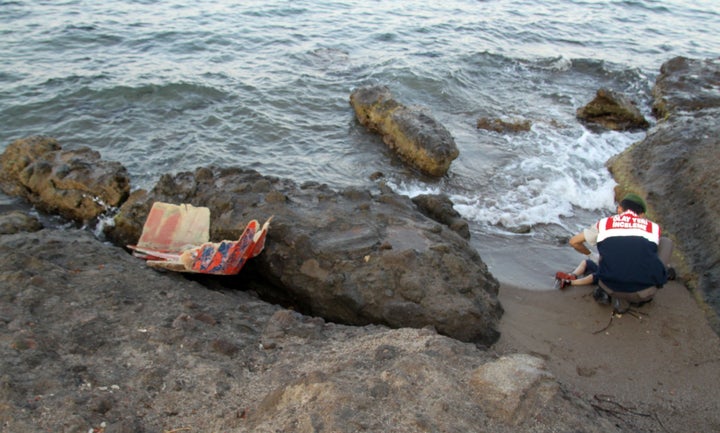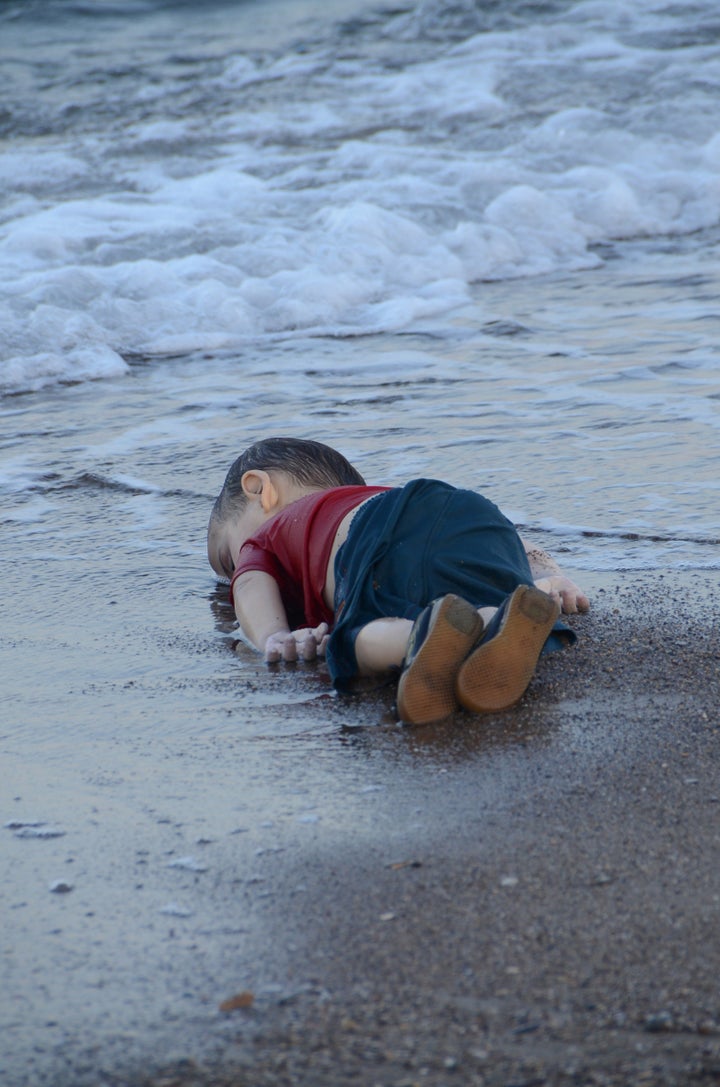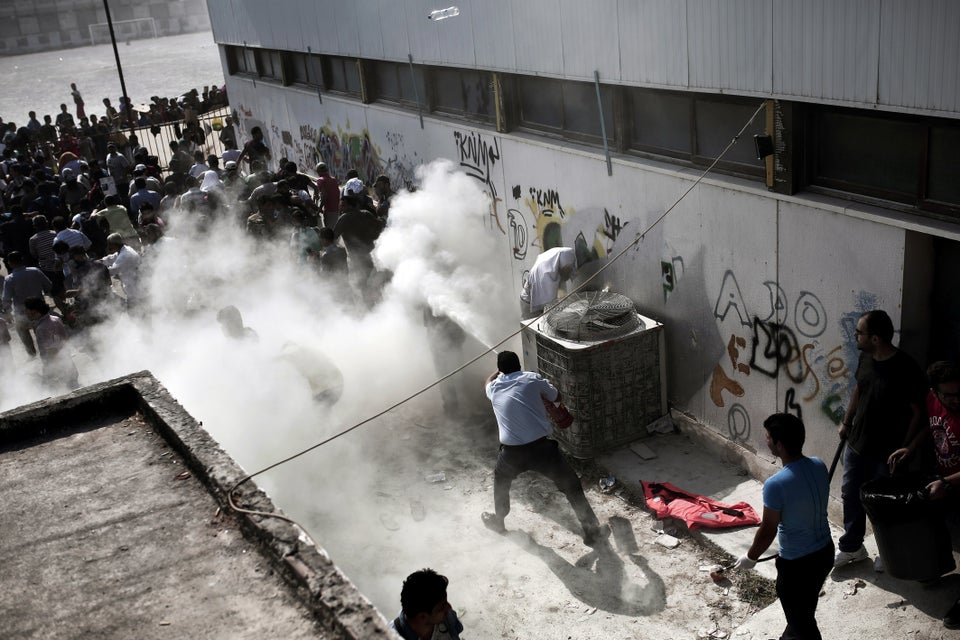
Traumatic photos showing a dead Syrian boy lying face down in the sand of a tourist beach in Turkey on Wednesday once again highlighted the immense humanitarian toll of the refugee and migrant crisis in Europe.
Note: This article contains disturbing images from the beach at Bodrum that will be upsetting to some readers.
Still young enough to wear velcro shoes, the child's body was found on shore after two boats carrying Syrian refugees capsized. The boats were attempting to journey from the Turkish town of Bodrum to the island of Kos in Greece.
Survivors say at least 12 people died in the failed crossing, including four children and a woman. Seven other people were rescued.
Turkish media identified the boy as 3-year-old Aylan Kurdi from the Syrian town of Kobani, according to Reuters. Kurdi's 5-year-old brother is also believed to have died when the boat capsized.
In other photos, a Turkish officer cradles Kurdi's limp body as he removes the child from the beach.
The photos offer even more evidence of the dangers hundreds of thousands of people fleeing conflict or seeking a better life in Europe can face during their journeys across international borders.
Kurdi's death, along with the those of 71 people found suffocated in a truck in Austria last week, have spurred urgent calls from human rights groups across the world for European leaders to agree on a unified policy to respond to the crisis.
"These deaths are utterly preventable if Europe actually had a policy in place to provide safe passage for people fleeing the war in Syria," Human Rights Watch Emergency Director Peter Bouckaert told The WorldPost.
"I think that picture perfectly demonstrates the consequences of the European failure to come to terms with the reality of this very profound crisis."
Every day, thousands of people from countries including Syria, Afghanistan and Eritrea attempt to make it to European nations. Over 350,000 have crossed the Mediterranean in 2015 alone, according to the International Organization for Migration.
The response from European countries has so far been scattered and insufficient. Many EU states have addressed the issue as a security dilemma, putting up walls or proposing anti-migration laws instead of allowing for safe border passage or access to asylum procedures.
"Refugees are left with no option but to take extraordinarily dangerous illegal journeys by sea to Greece and Italy. With an estimated 200,000 refugees still planning to make the journey to Greece this year, it is inevitable that we will see a further loss of life until Europe’s policies change," the International Committee of the Red Cross said in a statement Wednesday.
Germany, which projects it will take 800,000 applications for asylum this year, has called on other nations to come together to find a unified approach to the crisis. EU ministers are set to meet on Sept. 14 to discuss what action should be taken.
Rights groups and observers have pointed out that while the number of refugees and migrants heading to Europe has risen sharply in the past year, this migration still only accounts for a tiny fraction of populations.
"Just to give you an idea of scale and of reality, so far the number of people who have applied for asylum in Europe represent .1 percent of the population of Europe," Bouckaert said.
Hein de Haas, the former co-director of the International Institute on Migration, told The WorldPost that Europe's refugee crisis is really a crisis of political failure to establish a common policy for those trying to enter the EU.
"With more than half a billion inhabitants, the European Union has the resources to cope with this, and can make sure that people arriving at the European border get access to asylum procedures," he said.


